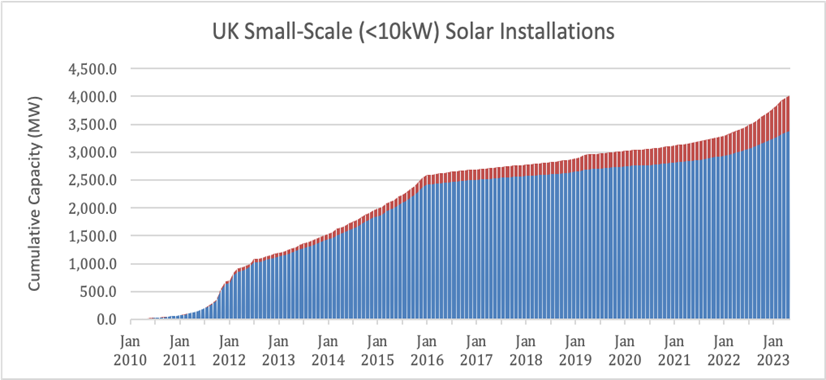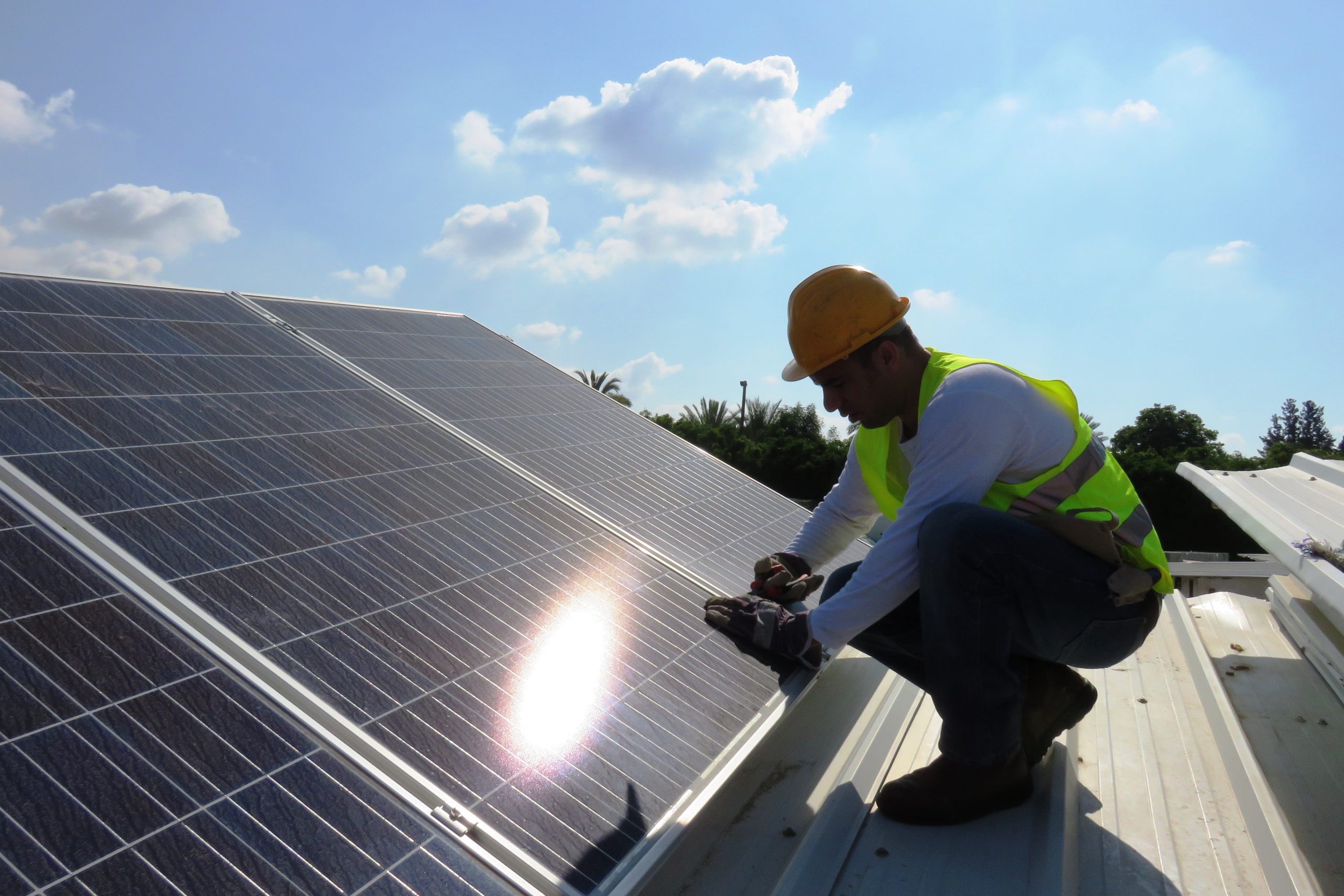UK solar power is surging stronger than ever, so fast that the nation’s grid capacity is increasingly struggling to keep pace, new analysis indicates.
Home rooftop systems beneath 10kWp in capacity are being installed at their fastest rate since 2016, energy consultants NTT Data calculate, using government statistics.
Domestic solar accounts for an estimated 27% of Britain’s 15.6GWp of PV systems now generating.
Homes adding solar panels made up 73% of Britain’s new PV capacity last year. Domestic additions for the half decade since 2016 had averaged only 43%.
But without speeded up connections delayed by thermal and voltage constraints everywhere on Britain’s creaking grid, NTT say 2050 may yet become an impossible deadline for the UK to attain Net Zero.

Run-rate installations of home PV lagged the 25% mark for five years between March 2016 and last June, the consultants note.
Capex write-offs favour oil and gas
Planning rejections for solar fields also ran in 2022 at their highest rate for five years, NTT notes further drive expansion on homes’ roofs.
Initiated by Theresa May’s government to help home generators sell unwanted power, Smart Export Guarantee (SEG) tariffs offered by retailers now reward homeowners only with a meagre of 13% of current wholesale prices. These stand at around 37.2p per kWh.
That economic logic prompts PV owners to direct excess energy towards home batteries or home-charged family EVs, rather than selling and it back to the grid. Soaring retail tariffs increase the incentive to store excess power, not sell it.
Eduardo Fernandez, NTT Data’s head of gas, power & water observed: “Energy microgeneration has graduated from theory to practice: due, in part, to rapidly increasing energy prices.
“Renewed investment in solar installations by homeowners is driving the decentralisation of the energy grid, ramping up the pressure for local network transformation.
“Small installations now make up a quarter of the UK’s national solar capacity. That puts pressure on DNOs to make drastic changes to their technology stack.
“Homeowners are now paid an average of around 4.9p/kWh to deliver excess electricity back to the grid. Wholesale prices paid by electricity companies are almost 10 times this, and the current energy cap is 9 times the price paid”.




